To make your sofa better for your back, consider adding lumbar support and using firm cushions. Having proper lumbar support and firm cushions helps maintain good posture and reduces stress on your back.
A comfortable sofa is essential for a good seating experience, especially when it comes to supporting your back. If you find that your current sofa doesn’t provide adequate support, there are a few things you can do to make it better for your back.
Lumbar support is crucial in maintaining the natural curve of your spine while sitting, so consider adding a lumbar pillow or a rolled-up towel behind your lower back. Additionally, using firm cushions rather than soft ones can provide better support for your back. By making these simple adjustments, you can improve the comfort and ergonomics of your sofa, ensuring a healthier and more enjoyable seating experience.
Table of Contents
- Understanding The Importance Of A Supportive Sofa
- Tip 1: Optimal Seat Depth And Height
- Tip 2: Cushion Firmness And Material
- Tip 3: Lumbar Support And Adjustable Features
- Tip 4: Proper Sitting And Posture Techniques
- Tip 5: Regular Maintenance And Upkeep
- Frequently Asked Questions Of How Can I Make My Sofa Better For My Back
- Conclusion
Understanding The Importance Of A Supportive Sofa
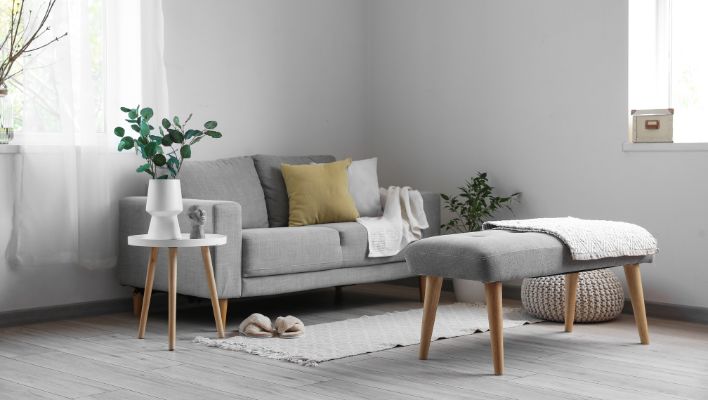
When it comes to optimizing our living spaces for comfort, the sofa plays a crucial role. However, many of us overlook the significance of a supportive sofa in maintaining good back health. A supportive sofa not only provides a comfortable seating arrangement but also helps alleviate stress on the spine and promote better posture.
The Impact Of An Unsupportive Sofa On Your Back Health
An unsupportive sofa can have detrimental effects on your back health. It fails to provide proper lumbar support, resulting in poor posture, strains on the muscles, and increased pressure on the spine. Over time, this may lead to chronic back pain, aggravated spinal conditions, and discomfort. Therefore, it is essential to invest in a sofa that prioritizes adequate support for your back.
Read Also: Do Regal Theater Sofa Seats Recline?
Choosing The Right Sofa For Adequate Back Support
When selecting a sofa that offers adequate back support, there are several factors to consider:
- Ergonomics: Look for a sofa that follows ergonomic principles, meaning it is designed to support the natural curves and alignment of the spine. Opt for sofas with adjustable backrests and cushions that contour to the shape of your back.
- Supportive cushions: Consider sofas with firm, supportive cushions that distribute your weight evenly and maintain the natural curvature of your spine. Avoid excessively soft cushions that sink too much, as they can lead to poor posture and discomfort.
- Lumbar support: Pay attention to the presence of built-in lumbar support or adjustable lumbar pillows in the sofa design. This extra support helps maintain the natural curve of your lower back, reducing strain and promoting healthier sitting positions.
- Seat depth: Ensure the sofa’s seat depth allows your feet to rest comfortably on the floor while providing ample back support. Avoid sofas with overly deep seats, as they can cause your legs to dangle or lead to slouching.
- Material quality: Consider sofas made from high-quality materials that retain their shape and support over time. Look for sturdy frames, durable upholstery, and cushions that maintain their firmness.
Investing in a supportive sofa is an investment in your back health. By understanding the impact of an unsupportive sofa and choosing the right one for adequate back support, you can significantly improve your sitting experience and prevent future back problems. Prioritize your comfort and well-being by opting for a sofa that provides the necessary support your back deserves.
Tip 1: Optimal Seat Depth And Height
Ensure optimal seat depth and height for your sofa to alleviate back pain. Adjusting these factors can significantly improve your seating posture and provide better support for your back, promoting comfort and reducing discomfort.
Determining The Ideal Seat Depth For Proper Back Support
When it comes to improving the comfort and support of your sofa, seat depth plays a crucial role in maintaining proper back alignment. A seat that is too shallow or too deep can strain your back and lead to discomfort. To determine the ideal seat depth for your sofa, follow these simple steps:
- Start by sitting on your sofa with your back against the backrest.
- Place a cushion or rolled-up towel behind your lower back, supporting the natural curve of your spine.
- Ensure that there is a couple of inches of space between the back of your knees and the edge of the seat.
- If your knees are too close to the edge or there is a large gap, it indicates that the seat depth is not optimal.
- An ideal seat depth allows your feet to comfortably touch the floor while maintaining good posture.
By following these steps, you can determine the ideal seat depth that provides proper back support, helping to alleviate any discomfort or strain on your back while sitting on the sofa.
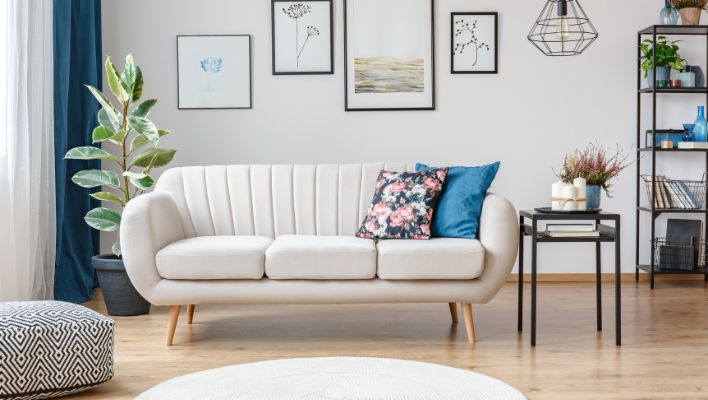
Finding The Right Seat Height To Maintain Good Posture
Another important consideration for improving the comfort and support of your sofa is the seat height. The right seat height helps maintain good posture and prevents unnecessary strain on your back. Here’s how to find the right seat height:
- Stand in front of your sofa and measure the distance from the floor to the back of your knees.
- Subtract a couple of inches from this measurement to allow for cushion compression.
- This adjusted measurement will give you the ideal seat height that promotes good posture.
- Ensure that your feet can rest comfortably on the floor, with your knees at a 90-degree angle.
- Remember, if your feet dangle or you find yourself slouching to reach the floor, the seat height is too high.
By finding the right seat height, you can maintain proper posture while sitting on your sofa and prevent unnecessary strain on your back muscles.
Tip 2: Cushion Firmness And Material
When it comes to making your sofa better for your back, the firmness and material of the cushions play a crucial role. By choosing the right cushion firmness and material, you can greatly enhance your comfort and support, ensuring a healthier back. Let’s explore the benefits of firm vs. soft cushions for back health and the role of different cushion materials in providing support.
Exploring The Benefits Of Firm Vs. Soft Cushions For Back Health
Finding the perfect balance between firmness and softness is essential when supporting your back. Both firm and soft cushions have distinct advantages that cater to different needs and preferences.
Firm Cushions
Firm cushions offer superior support and stability for your spine. The firmness helps maintain proper alignment and prevents excessive sinking into the sofa. If you have chronic back pain or prefer a more upright sitting position, firm cushions can provide the necessary support to alleviate discomfort.
Soft Cushions
On the other hand, soft cushions offer a plush and cosy feeling that allows for a comfortable sinking sensation. Soft cushion materials conform to your body shape, reducing pressure points and promoting relaxation. If you prefer a more relaxed and laid-back sitting experience, soft cushions can provide the desired level of comfort.
Choosing between firm and soft cushions ultimately depends on your personal preferences, body conditions, and the level of support your back requires. It’s important to test different firmness levels to determine what feels best for you.
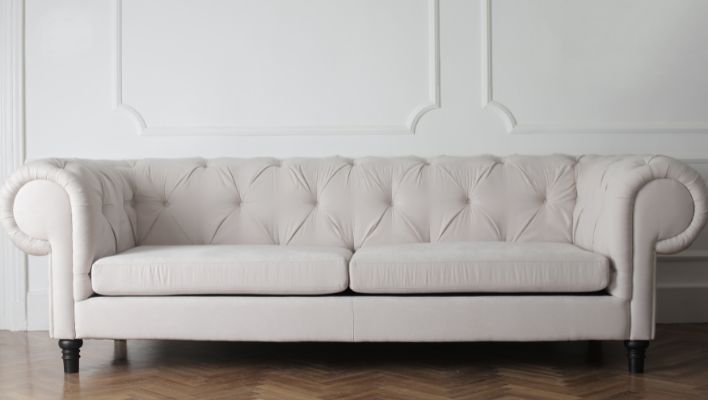
The Role Of Different Cushion Materials In Providing Support
In addition to cushion firmness, the material used in cushions plays a significant role in providing support to your back. Different cushion materials offer varying levels of comfort and durability:
| Cushion Material | Description |
|---|---|
| Memory Foam | A popular choice due to its ability to conform to your body shape, providing personalized support and relieving pressure points. |
| High-Density Foam | Offers excellent support and durability, ideal for individuals who require firmer cushioning. |
| Down and Feather | Provides a luxurious and soft feel while offering moderate support. Requires frequent fluffing to maintain shape. |
| Polyester Fiberfill | A comfortable and affordable option that provides moderate support, but may compress over time. |
When selecting cushion materials, consider factors such as your budget, desired level of support, and maintenance requirements. Remember that the right cushion material can significantly enhance your sofa’s back support and overall comfort.
Read Also: How to Transform Your Armless Sofa with Stylish Arms
Tip 3: Lumbar Support And Adjustable Features
Ensure optimal comfort for your back with lumbar support and adjustable features on your sofa. These features can be the key to making your sofa better suited to support your back and prevent discomfort.
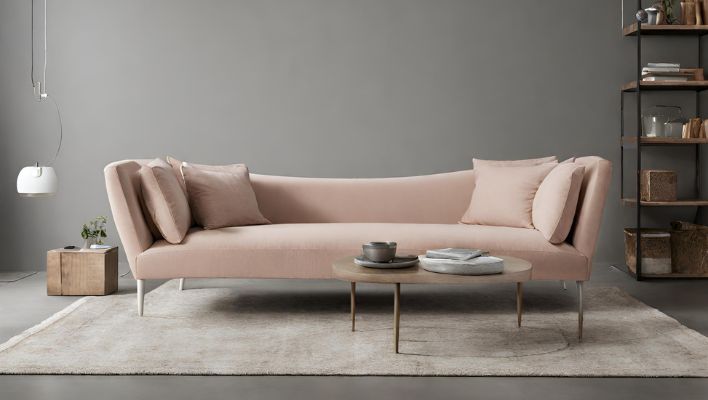
Incorporating Lumbar Support In Your Sofa For Better Back Alignment
When it comes to improving the comfort and support of your sofa for your back, incorporating lumbar support is essential. Lumbar support is specifically designed to target the lower back, filling in the natural curve of your spine and promoting proper alignment. By reducing strain on the lumbar region, you can alleviate back pain and promote better posture. Here are a few effective ways to incorporate lumbar support into your sofa:
- Opt for sofas with built-in lumbar support. Many modern sofa designs now come with lumbar cushions or built-in lumbar panels that provide targeted support to the lower back. Look for sofas that have a distinctive curve or additional padding in the lumbar area.
- Add removable lumbar pillows or cushions. If your current sofa lacks built-in lumbar support, you can easily enhance your seating by using removable lumbar pillows or cushions. These can be placed strategically behind your lower back to provide the desired support.
- Consider using a lumbar roll. A lumbar roll is a small, cylindrical pillow that can be strapped onto your sofa. It helps to maintain the natural curve of your lower back and reduces pressure on the spine while sitting. Simply position the lumbar roll at the appropriate height for your back and enjoy the added support.
Read Also: How to Clean Your Ashley Sofa: Expert Tips and Tricks
The Advantages Of Sofas With Adjustable Features For Back Comfort
When it comes to back comfort, sofas with adjustable features take the seating experience to a whole new level. These sofas offer personalized adjustments to suit your individual needs, ensuring optimal support and comfort for your back. Here are some advantages of sofas with adjustable features:
- Customizable backrest positions. Adjustable sofas allow you to modify the angle of the backrest to find the most comfortable position for your back. You can recline slightly to relieve pressure on the spine or sit upright to maintain proper posture.
- Height-adjustable seats. Some sofas offer the option to adjust the seat height, which can be beneficial for individuals with different heights or those who require specific seating positions for optimal back support.
- Modify seat depth. Sofas with adjustable seat depth allow you to adapt the seat to your body’s dimensions. This feature ensures that your back is properly supported, preventing slouching or discomfort caused by excessive pressure on the thighs.
- Head and neck support. Certain adjustable sofas also offer head and neck support mechanisms, such as adjustable headrests or built-in pillows. These features can help relieve tension in the upper back and neck area, enhancing overall comfort.
Tip 4: Proper Sitting And Posture Techniques
Improve your back health on your sofa with proper sitting and posture techniques. Learn how to align your spine and maintain a comfortable position to prevent back pain and discomfort.
Practising correct sitting posture is vital when it comes to alleviating back strain while using your sofa. By incorporating ergonomic habits into your sitting routine, you can make a significant difference in supporting your back and improving your overall comfort.
Practicing Correct Sitting Posture To Alleviate Back Strain
Sitting for extended periods can put a strain on your back and lead to discomfort and pain. However, by adopting the correct sitting posture, you can minimize these issues and make your sofa better for your back.
Here are some tips to help you practice proper sitting posture:
- Keep your feet flat on the floor or use a footrest to ensure proper alignment of your legs and lower back.
- Support your lower back by placing a cushion or a rolled-up towel behind it.
- Engage your core muscles and maintain a neutral spine by sitting up straight and avoiding slouching.
- Elevate your laptop or tablet to eye level using a stand or stack of books to prevent straining your neck.
- Avoid crossing your legs, as it can lead to an uneven distribution of weight and put additional pressure on your spine.
- Take short breaks every 30 minutes to stretch and change your sitting position.
Read Also: How to Clean Futon Sofa:
Incorporating Ergonomic Habits While Using The Sofa
In addition to practising correct sitting posture, incorporating ergonomic habits while using your sofa can enhance your back support and further improve your sitting experience.
- Choose a sofa that provides proper lumbar support, ensuring that the cushioning is firm enough to maintain your natural spinal curvature.
- Use a supportive cushion behind your back to provide extra lumbar support.
- Utilize a cushion or pillow to support your neck and maintain proper alignment with your spine.
- Position your sofa in a way that maximizes natural lighting to reduce eye strain and improve overall well-being.
- Ensure your sofa is at an appropriate height to prevent strain on your knees and hips when standing up or sitting down.
- Consider using a footrest or adjustable ottoman to elevate your feet and promote proper circulation.
By implementing these proper sitting and posture techniques while using your sofa, you can not only make it better for your back but also enhance your overall sitting experience. Remember to stay mindful of your posture and take breaks to stretch and relax your muscles regularly.
Tip 5: Regular Maintenance And Upkeep
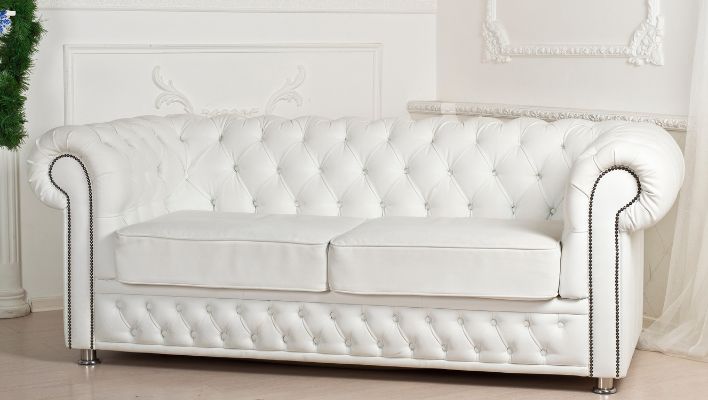
Regular maintenance and upkeep are crucial for making your sofa better for your back. This involves cleaning, fluffing cushions, and ensuring proper support and alignment to minimize discomfort and improve posture.
The Importance Of Maintaining Your Sofa For Long-lasting Back Support
Regular maintenance and upkeep of your sofa can significantly contribute to its longevity and provide optimal support for your back. Neglecting proper maintenance not only deteriorates the appearance of your sofa but also diminishes its ability to provide adequate support. With consistent care, you can ensure that your sofa remains in excellent condition, promoting a healthier and more comfortable seating experience. Here are a few essential maintenance practices to help enhance your sofa’s back support:
Performing Routine Maintenance And Cleaning Procedures
To retain the back support your sofa initially provided, performing routine maintenance and cleaning procedures is crucial. Dust, dirt, and debris can accumulate in your sofa’s upholstery, causing it to lose its plushness and supportiveness. Regular vacuuming with a soft brush attachment will help remove surface dust and prevent it from settling deeper within the fabric.
Additionally, if your sofa has removable cushion covers, follow the manufacturer’s instructions to wash them regularly. This will not only keep your sofa looking fresh but also eliminate allergens and bacteria that can contribute to discomfort and back pain.
Read Also: How to Effortlessly Separate Your Sectional Sofa
Using A Fabric Upholstery Cleaner
In addition to routine cleaning, occasional deep cleaning with a suitable fabric upholstery cleaner can revitalize your sofa and restore its supportive qualities. Before using any cleaning products, it is essential to test them on a small, inconspicuous area of the sofa to ensure they do not damage or discolour the fabric. Follow the instructions provided by the cleaner manufacturer to effectively remove stains and refresh your sofa’s upholstery.
Flipping And Rotating Cushions
Another maintenance practice that can enhance your sofa’s back support is flipping and rotating the cushions regularly. Over time, cushions can become compressed and lose their original shape, reducing comfort and support. By flipping and rotating the cushions every few months, you distribute the wear and tear more evenly, preventing any one area from becoming excessively worn or uncomfortable.
Tightening Loose Screws And Replacing Worn Parts
Loose screws or worn-out components can significantly compromise the structural integrity of your sofa, affecting its supportive capabilities. Regularly inspect the frame and any mechanical parts, such as reclining mechanisms or sofa bed mechanisms, for any signs of damage or wear. If you notice any loose screws, tighten them promptly, and if necessary, consult a professional for repairs. By addressing these issues promptly, you can maintain a sturdy and supportive sofa for your back.
Read Also: How to Clean Fabric Sofa Without Water: Ultimate Guide
Frequently Asked Questions Of How Can I Make My Sofa Better For My Back
How Can I Make My Couch More Supportive For My Back?
To make your couch more supportive for your back, you can try adding a lumbar pillow or cushion to provide extra support. You can also consider using a firm mattress topper or placing plywood boards under the cushions for enhanced stability.
What Type Of Couch Is Good For A Bad Back?
A supportive couch with good lumbar support is ideal for a bad back. Look for a firm yet comfortable option that promotes proper spinal alignment. Avoid excessively soft or sagging couches that can exacerbate back pain.
What Are The Best Ways To Make My Sofa More Comfortable For My Back?
To make your sofa better for your back, try adding lumbar support pillows, using a mattress topper, adjusting the seat depth, or adding a reclining mechanism. Additionally, choosing sofas with good cushion support and proper backrest height can also make a big difference in supporting your back and promoting proper sitting posture.
Is It Necessary To Choose A Specific Type Of Sofa For Back Support?
While it’s not necessary to choose a specific type of sofa for back support, certain types of sofas may be more beneficial for your back. Sofas with firm cushion support and proper lumbar support can be ideal for promoting good posture and back support.
Additionally, sofas with adjustable features like reclining options can provide customizable comfort for your back.
Conclusion
To sum up, investing in small adjustments and incorporating proper support can greatly enhance the comfort and health benefits of your sofa for your back. By exploring options like lumbar pillows, and seat cushions, and adjusting the positioning of your sofa, you can optimize your seating experience.
Remember to prioritize your posture and take regular breaks to stretch and move around. A well-designed and supportive sofa can contribute to a healthier and more comfortable lifestyle for your back.



